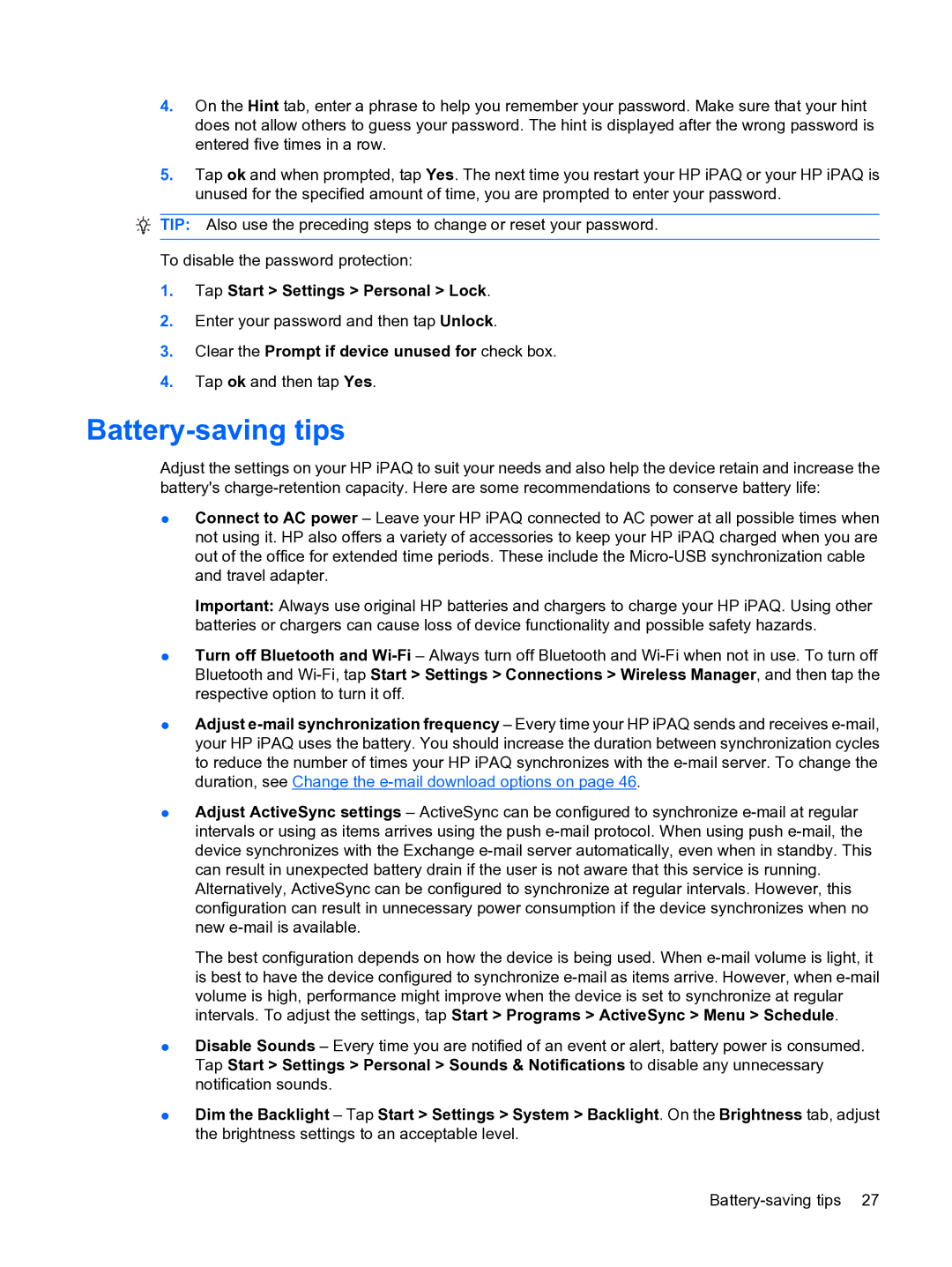4.On the Hint tab, enter a phrase to help you remember your password. Make sure that your hint does not allow others to guess your password. The hint is displayed after the wrong password is entered five times in a row.
5.Tap ok and when prompted, tap Yes. The next time you restart your HP iPAQ or your HP iPAQ is unused for the specified amount of time, you are prompted to enter your password.
![]() TIP: Also use the preceding steps to change or reset your password.
TIP: Also use the preceding steps to change or reset your password.
To disable the password protection:
1.Tap Start > Settings > Personal > Lock.
2.Enter your password and then tap Unlock.
3.Clear the Prompt if device unused for check box.
4.Tap ok and then tap Yes.
Battery-saving tips
Adjust the settings on your HP iPAQ to suit your needs and also help the device retain and increase the battery's
●Connect to AC power – Leave your HP iPAQ connected to AC power at all possible times when not using it. HP also offers a variety of accessories to keep your HP iPAQ charged when you are out of the office for extended time periods. These include the
Important: Always use original HP batteries and chargers to charge your HP iPAQ. Using other batteries or chargers can cause loss of device functionality and possible safety hazards.
●Turn off Bluetooth and
●Adjust
●Adjust ActiveSync settings – ActiveSync can be configured to synchronize
The best configuration depends on how the device is being used. When
●Disable Sounds – Every time you are notified of an event or alert, battery power is consumed. Tap Start > Settings > Personal > Sounds & Notifications to disable any unnecessary notification sounds.
●Dim the Backlight – Tap Start > Settings > System > Backlight. On the Brightness tab, adjust the brightness settings to an acceptable level.
